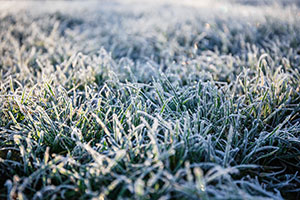
Are you using your irrigation system to help protect your crops this winter? When the temperature drops and there’s a frost or freeze warning, instead of worrying about the losses, take a look at how you can prevent damage. Here’s our quick guide to frost protection.
How Water Protects Crops from Frost
It might sound counterintuitive, but watering when the temperature drops to freezing or below can actually protect your crops from frost and freeze damage. Heat fusion is the key and occurs when the air temperature drops below 32°, and the freezing water coats the plants. The process of water freezing is what produces the heat.
Here’s how it works:
- The irrigation system runs as temperatures drop
- Water on the plants freezes, creating a reaction that releases heat under the ice, creating a 2° to 5° buffer
- The heat given off as water turns to ice and protects the plant from the freezing air.
What You Need
When using irrigation to protect plants and crops from frost, the ice must be clear and drip from the plants. If the ice solidifies and turns milky-colored, there isn’t enough water to protect from frost. You’ll need to boost water application. The ice and dripping water should be uniform across the plants, and the irrigation should be continuous. Increase the amount of water as the temperature drops and continue irrigation until the air temperature rises above 32° and the ice melts.
Frost protection during the winter months is critical to your crops’ survival. The experts at W.P. Law, Inc. can guide you in your agricultural irrigation throughout the year, including the freezing months. Contact their team today for more information.









